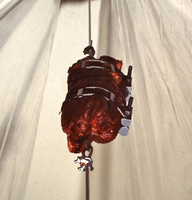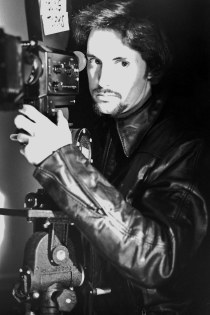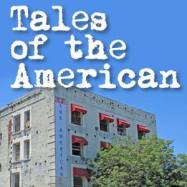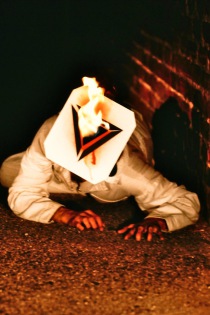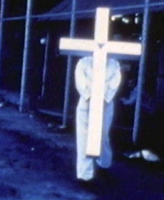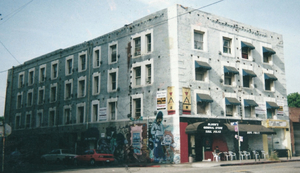

Stephen Seemayer: Documenting Community
Multimedia artist Stephen Seemayer, in addition to being the documentarian behind "Young Turks, has had a long and varied career of performance art, painting and filmmaking.
His controversial works of the 1970s and '80s involved meat, fire and aborted human fetuses.
"I was exploring what it means to be human in an increasingly technological society," Seemayer says.
In 1980, he walked with a cross on his back from Los Angeles to San Diego. The cross featured a video monitor showing a continuous loop of the Pope’s public appearances. The six-day performance provoked a variety of unanticipated responses from those Seemayer crossed paths with, depending on the geographic and socio-economic traits of the neighborhood he was in.
"I was blessed in some areas and reviled in others," Seemayer says, "and it had less to do with my intentions than with the interpretation of the piece by those that encountered it."
“Pope Video” called into question the absolute authority of the church and the blind faith that many people have in organized religion. Although Seemayer hadn’t planned it that way, it was his first piece that examined qualities of community and communal experience.
His interest in documenting community would become evident in his feature film "Young Turks."
"All my life, I have studied and imagined the dynamics of the amazing art communities that came before me," Seemayer says, citing the Belle Époque Paris of Toulouse-Lautrec, the Bateau Lavoir and La Ruche studios in Paris, and the Abstract Expressionists of postwar New York.
From 1977 to 1981, Seemayer began filming the art scene he had joined when he moved from the San Fernando Valley to a rugged section of downtown Los Angeles.
"I basically just filmed my friends talking about their work and hanging out at Al's Bar," Seemayer says. The resulting documentary captures one group of artists at a particular period in a specific location, allowing the viewer to be transported back in time, and to see and feel what it was like to have been a part of that community.
The documentary that Seemayer — with wife and filmmaking partner Pamela Wilson — has recently finished, “Tales of the American,” has a similar goal.
They are essentially presenting a biography of a building that has stood since 1905 and has been a haven for outcasts, misfits and artists for more than a century.
Much like the Bateau Lavoir and La Ruche, the American Hotel has housed artists, musicians, writers and actors, and continues to be the creative heart of the changing L.A. Arts District. Through interviews with those who have called it home over the past seven decades, and archival photos, film and videos of the colorful events and characters of its past, Wilson and Seemayer will keep alive the spirit of the American Hotel as it evolves along with its gentrifying neighborhood.
By recalling the stories and people of the American Hotel and the Arts District of the past, the filmmakers hope to create a portrait of a community that continues to thrive despite rapid and drastic changes.
VR Work by Stephen Seemayer
Artist Stephen Seemayer has used his own image and the element of fire in his works since beginning his career as a teenager in the 1970s. This work was created at a studio in Downtown Los Angeles in virtual reality, using oil paint and fire brushstrokes.
